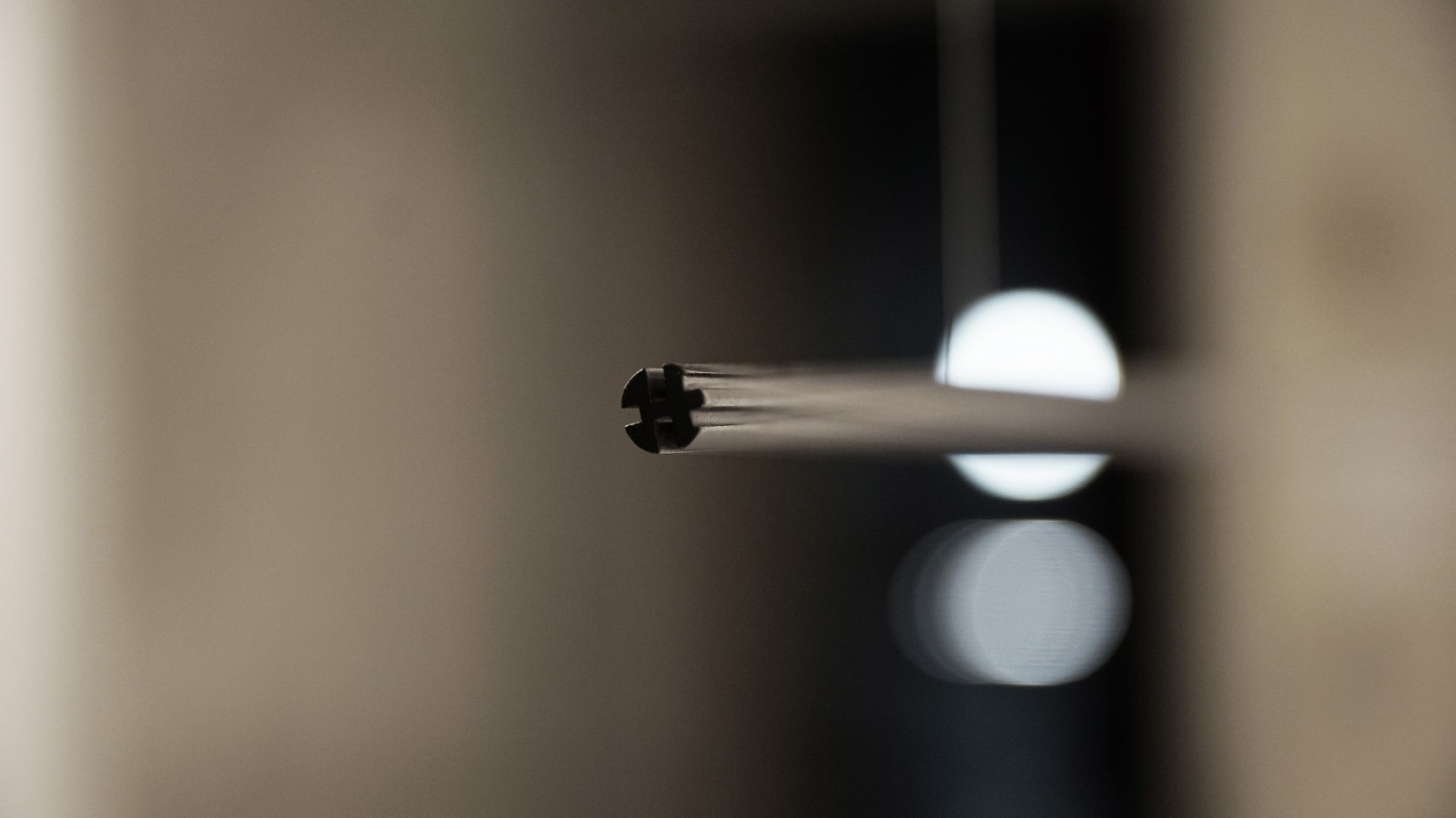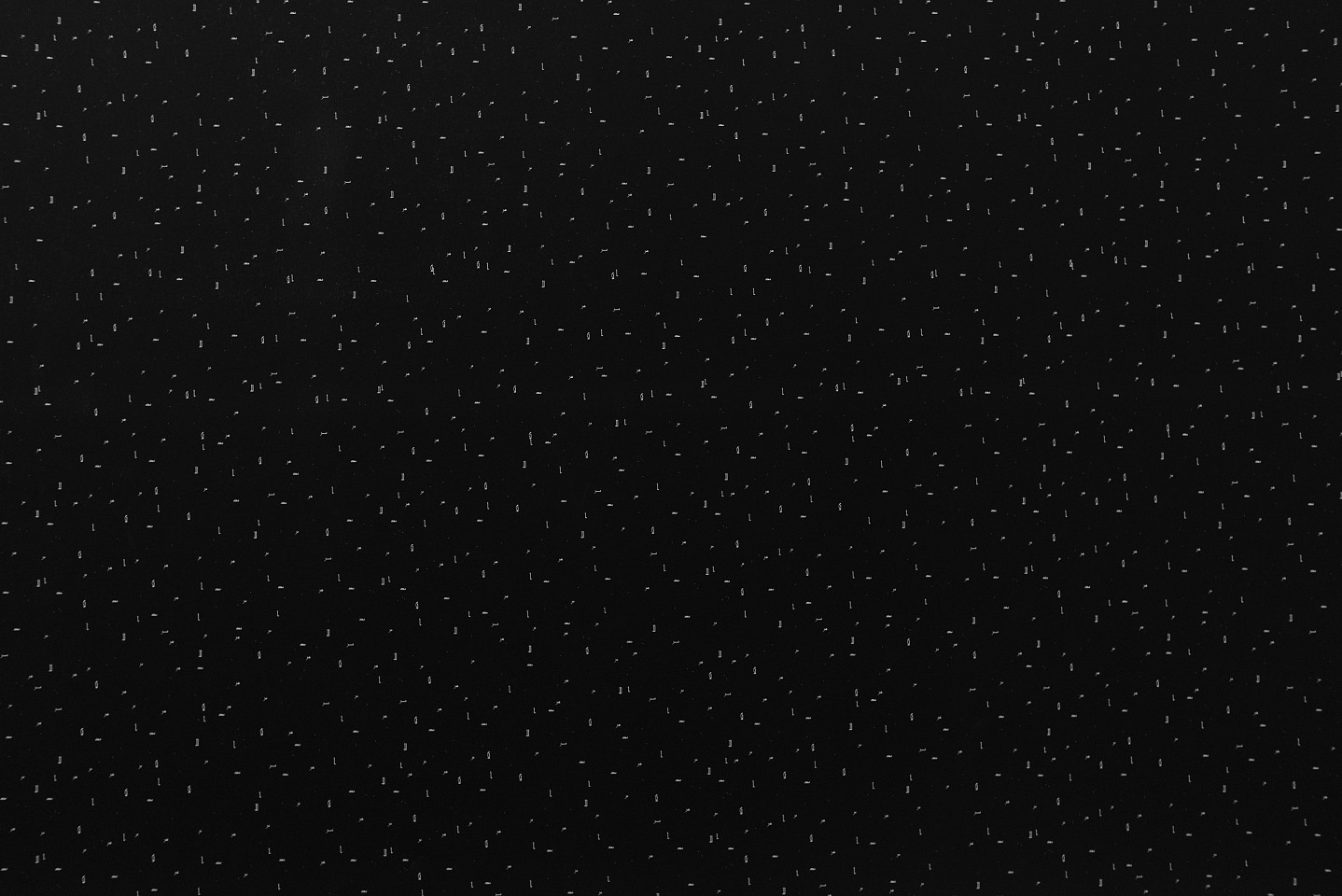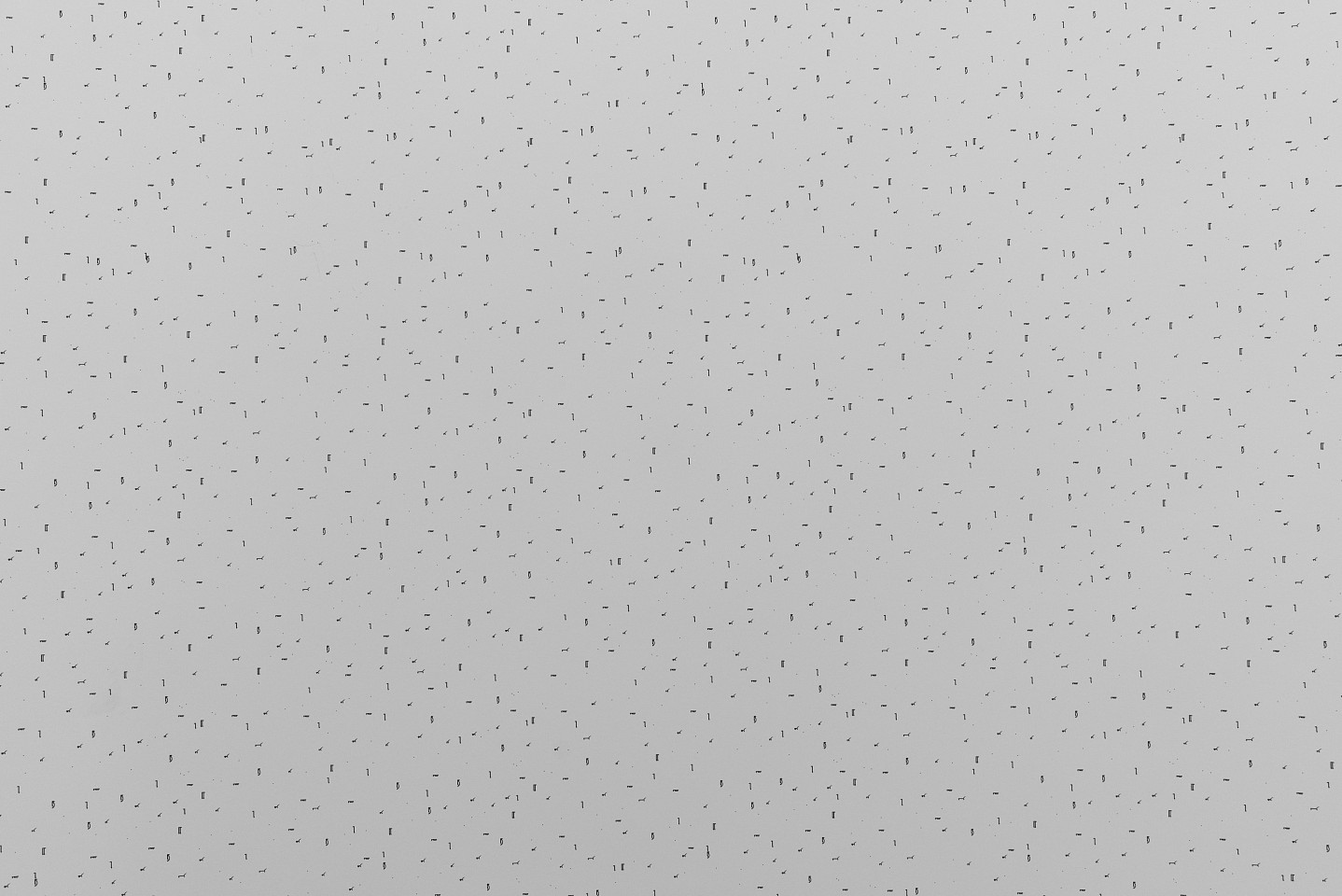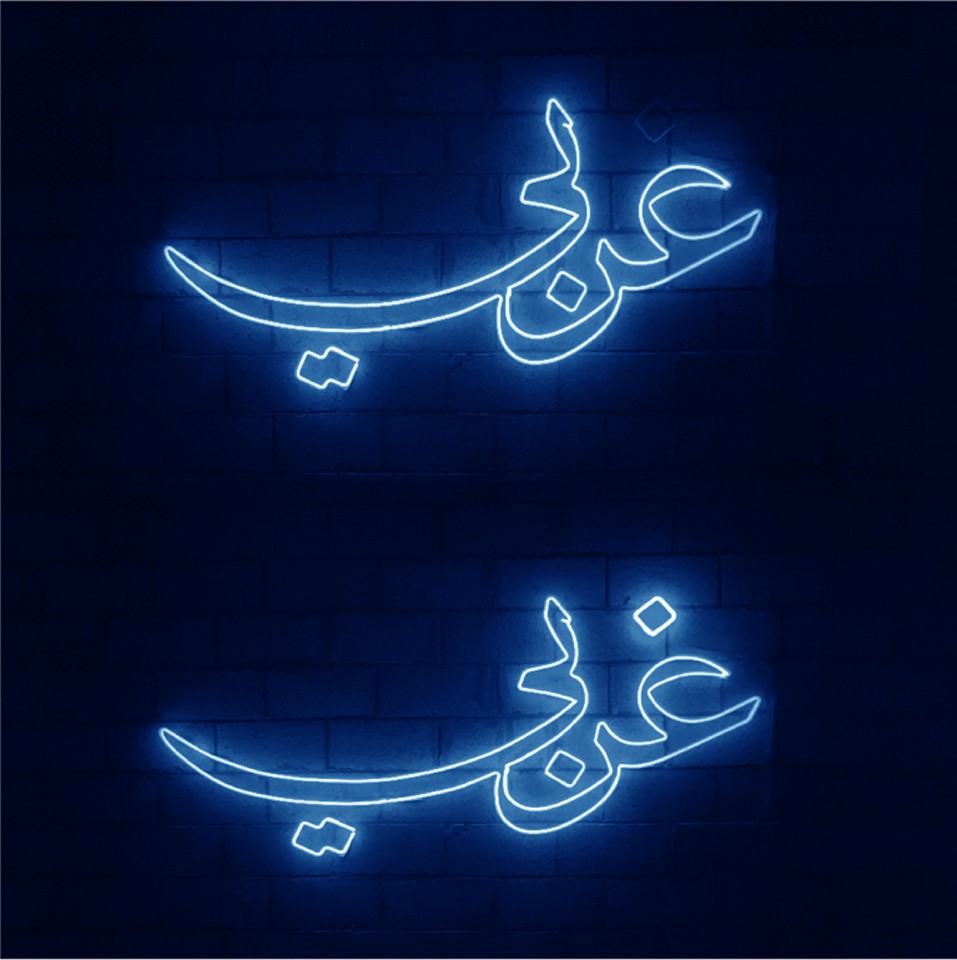Nasser Al Salem
Nasser Al Salem
They Will Be Seen Competing In Costructing Lofty Buildings, 2014
Concrete Sculpture
Edition of 5
NAS0147
Nasser Al Salem
An Adornment of Stars, 2014
Video (loop)
Edition of 5
NAS0142
Nasser Al Salem
Artwork, 2014
Silkscreen on archival paper
70 x 50 cm (27 1/2 x 19 5/8 in.)
From Language Is Stronger Than Light series, Edition of 5
NAS0200
Nasser Al Salem
Family Portrait, 2014
Silkscreen on archival paper
70 x 50 cm (27 1/2 x 19 5/8 in.)
From Language Is Stronger Than Light series, Edition of 5
NAS0205
Nasser Al Salem
Zamzam, 2010
Embossed with Silk Screen on paper, hand painted with Gold Leaf
Edition of 3 + 1 AP / Edition of 20 + 2 AP, Acquired by The British Museum, London
NAS0061
Nasser Al Salem
Kul, 2012
Hand painted on archival paper
100 x 100 cm (39 3/8 x 39 3/8 in.)
Edition of 3 + 2 AP
NAS0039
Nasser Al Salem
Kul I, 2012
UV digital print
60 x 160 cm (23 5/8 x 63 in.)
Edition of 5 + 1 AP
NAS0006
Nasser Al Salem
Kul II, 2012
UV digital print
140 x 140 cm (55 1/8 x 55 1/8 in.)
Edition of 5 + 1 AP
NAS0009
Nasser Al Salem
Kull VI, 2015
Print on layered Acrylic
110 x 110 x 15 cm (43 1/4 x 43 1/4 x 5 7/8 in.)
Edition of 5
NAS0248
Nasser Al Salem
Kul V, 2016
Print on acid free paper, faced with diasec
53 x 102 cm (20 13/16 x 40 1/8 in.)
NAS0278
Nasser Al Salem
Whoever Obeys Allah, He Will Make For Him A Way Out, 2013
Corian Sculpture
55 x 141 x 13 cm (21 5/8 x 55 1/2 x 5 1/8 in.)
NAS0135
Nasser Al Salem
God is Alive, He Shall Not Die, 2012
Neon in infinity box
120 x 120 cm (47 1/4 x 47 1/4 in.)
Edition of 2 + 1 AP
NAS0018
Nasser Al Salem
Guide Us Upon The Straight Path, 2013
Natural Ink on Paper
75 x 120 cm (29 1/2 x 47 1/4 in.)
Edition: 5 + 1 AP, Acquired by LACMA, United States
NAS0116
Nasser Al Salem
No Smoking, 2013
Natural ink and Gauche on archival paper
75 x 100 cm
Edition of 5 + 2 AP, Photographed by Khaled Bin Afif
Nasser Al Salem
And Whoever Obeys Allah, He Will Make For Him A Way Out, 2012
Corian Sculpture
120 x 95 cm (47 1/4 x 36 5/8 in.)
Edition of 3 + 2 AP, Acquired by Greenbox Museum, Amsterdam
NAS0025
Nasser Al Salem
Whoever Obeys Allah , He Will Make For Him A Way Out, 2012
Handmade Wooden Sculpture
120 x 93 cm (47 1/4 x 36 5/8 in.)
Edition of 3 + 1 AP
NAS0025
Nasser Al Salem
And Also In Your Own Selves, Do You Not See?, 2012
laser-cut stainless steel mounted on 20 mm acrylic20 mm acrylic
180 x 105 x 10 cm
Edition of 3 + 2 AP
NAS0084
Nasser Al Salem
Guide Us Upon The Straight Path, 2013
Video
Running time: 15 seconds
Edition: 5 + 1 AP
NAS0111
Nasser Al Salem
Makkah, 2011
Silk Screen on Tent Material
200 x 89 cm (78 3/4 x 35 in.)
From City of Nomads series
NAS0042
Nasser Al Salem
No. 63, 2011
Mixed Media
200 x 103 cm (78 3/4 x 40 1/2 in.)
From City of Nomads series
NAS0077
Nasser Al Salem
And Those Are The Days, We Rotate It Between The People, Plan, Population, Eqar, For Families Only, No Parking In Front Of The Door, Blueprint, No.63, Hatef, from the City Nomads series, 2014
Calligraphy on 100% cotton traditional tent fabric
100 x 200 cm (39 5/16 x 78 11/16 in.)
NAS0238
Nasser Al Salem
But just to reassure my heart
Silk Screen on Paper
100 x 70 cm
Edition of 9, From State of Affairs series
NAS0376
Nasser Al Salem
He Rules all Affairs
Silk Screen on Paper
150 x 150 cm
Edition of 9, From State of Affairs series
NAS0429
Nasser Al Salem
"الضوء Ù„Ø§Ø Ùديت ضوءك ÙÙŠ السواØÙ„ يا منامة" - من شعر غازي القصيبي , 2018
Stainless steel
780 x 1120 cm
Photo by Nicolas Matheus ©Nicolas Matheus
Nasser Al Salem
Allah [He is the First and the Last] II, 2018
Edition of 7
NAS0489
Nasser Al Salem
Amma Ba'ad, 2018
Aluminum and black paint
NAS0462
Nasser Al Salem
He Rules All Affairs , 2018
800 x 150 cm
Nasser Al Salem
He Rules All Affairs , 2018
Inkjet prints on paper
800 x 150 cm
Nasser Al Salem
Arabi, Gharbi (Blue), 2016
Neon Installation
NAS0459





















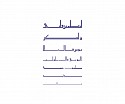


![Nasser Al Salem, Allah [He is the First and the Last] II
2018, Print](/images/30253_h125w125gt.5.jpg)



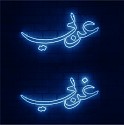
Zamzam is a calligraphic representation of the word ‘zamzam’, a miraculously generated source of water from God. The composition is significant to the holistic symbolic meaning of the piece. The word is designed to be read from left to right, right to left, up to down and down to up, echoing universal ways of reading. Such flow in the direction of this also depicts Hajar pacing between Safa and Marwa in order to find the source of the holy zamzam water. It also represents the angel Gabriel’s large wingspan, who was responsible for indicating to Hajar where to stomp her foot in order to reveal the source. At the heart of the print lies an intricately designed and manipulated 8-point star; this is where God is believed to rest upon his throne. According to Islamic tradition, the 8-point star is also a sign for infinity, which coincidentally, is also the general shape this piece has formed, implying Islam’s everlasting and unbreakable cycle.
Zamzam has been acquired by The British Museum in 2011.
The direct translation of Kul is ‘all’ or ‘everything’. However, the connotation of the word kulin the Arabic language is so much more complex in its all-encompassing meaning and implication of infinity. This meaning is compounded by the artist’s technique of calligraphically depicting the word kul repeatedly, so that it resembles an endless ripple effect.
The impression of never-ending repetition is not merely a reflection of God’s abundance on Earth, but an indication to look both further, and deeper, to penetrate the mere appearance and surface of things, to discover the hidden messages that all aesthetic creation hold.
Once, we thought the atom was the smallest particle, before we discovered that it was made of numerous smaller ones, as we once thought that the extent of our universe was the Milky Way Galaxy, before we discovered that there were hundreds of billions more galaxies out there. As God’s creation is infinite, and while we can say or write the word ‘infinite’ easily, it is impossible to imagine as it extends far beyond the human brain’s capacity for comprehension. Therefore, if one thinks of kul too deeply or for too long, they might realize that it doesn’t exist; there is no ‘all’ or ‘everything’.
The direct translation of Kul is ‘all’ or ‘everything’. However, the connotation of the word Kulin the Arabic language is so much more complex in its all-encompassing meaning and implication of infinity. This meaning is compounded by the artist’s technique of calligraphically depicting the word Kul repeatedly, so that it resembles an endless ripple effect. Â
Â
The impression of never-ending repetition is not merely a reflection of God’s abundance on Earth, but an indication to look both further, and deeper, to penetrate the mere appearance and surface of things, to discover the hidden messages that all aesthetic creation hold.
Â
 Once, we thought the atom was the smallest particle, before we discovered that it was made of numerous smaller ones, as we once thought that the extent of our universe was the Milky Way Galaxy, before we discovered that there were hundreds of billions more galaxies out there. As God’s creation is infinite, and while we can say or write the word ‘infinite’ easily, it is impossible to imagine as it extends far beyond the human brain’s capacity for comprehension. Therefore, if one thinks of Kul too deeply or for too long, they might realize that it doesn’t exist; there is no ‘all’ or ‘everything’.
The direct translation of Kul is ‘all’ or ‘everything’. However, the connotation of the word Kul in the Arabic language is so much more complex in its all-encompassing meaning and implication of infinity. This meaning is compounded by the artist’s technique of calligraphically depicting the word Kul repeatedly, so that it resembles an endless ripple effect.
The impression of never-ending repetition is not merely a reflection of God’s abundance on Earth, but an indication to look both further, and deeper, to penetrate the mere appearance and surface of things, to discover the hidden messages that all aesthetic creation hold.
Once, we thought the atom was the smallest particle, before we discovered that it was made of numerous smaller ones, as we once thought that the extent of our universe was the Milky Way Galaxy, before we discovered that there were hundreds of billions more galaxies out there. As God’s creation is infinite, and while we can say or write the word ‘infinite’ easily, it is impossible to imagine as it extends far beyond the human brain’s capacity for comprehension. Therefore, if one thinks of Kul too deeply or for too long, they might realize that it doesn’t exist; there is no ‘all’ or ‘everything’.
The direct translation of Kul is ‘all’ or ‘everything’. However, the connotation of the word Kul in the Arabic language is so much more complex in its all-encompassing meaning and implication of infinity. This meaning is compounded by the artist’s technique of calligraphically depicting the word Kul repeatedly, so that it resembles an endless ripple effect.
The impression of never-ending repetition is not merely a reflection of God’s abundance on Earth, but an indication to look both further, and deeper, to penetrate the mere appearance and surface of things, to discover the hidden messages that all aesthetic creation hold.
Once, we thought the atom was the smallest particle, before we discovered that it was made of numerous smaller ones, as we once thought that the extent of our universe was the Milky Way Galaxy, before we discovered that there were hundreds of billions more galaxies out there. As God’s creation is infinite, and while we can say or write the word ‘infinite’ easily, it is impossible to imagine as it extends far beyond the human brain’s capacity for comprehension. Therefore, if one thinks of Kul too deeply or for too long, they might realize that it doesn’t exist; there is no ‘all’ or ‘everything’.
Nasser Al-Salem’s work City Nomads is a movingly nostalgic piece that is a drastic departure from the artist’s previous calligraphic work. The subject, one that is close to his heart, is of the nomadic traditions that are forcibly disappearing by the ever-expanding cities and fast-paced modernization. The work comprises of hanging traditional tent flaps (that made-up the entrances of tents) on a number of scaffolds. Each ten-flap is marked with calligraphic verses and indications of modern-day ”tagging” that geo-records their location. The scaffolds are assembled in a way that force the viewer to explore and discover the tent-flaps within the skeletal structure. The assembly of tent-flaps, a traditional material for constructing the homes of Nomads, lay in stark contrast to the use of scaffolds, a modern day means for constructing buildings. Nasser’s hollow structure alludes to the flimsy and unstable, and appears to both question and highlight the foundation in which culture and tradition will continue to exist or disappear.
Tent-making was in fact the artist’s family’s main trade for several generations. The artist has many fond memories of growing up in their Mecca shop, which was eventually closed down as plastic constructions replaced tents as shelters for Hajj pilgrims.
for several generations. The artist has many fond memories of growing up in their Mecca shop, which was eventually closed down as plastic constructions replaced tents as shelters for Hajj pilgrims.
Nomads, by definition, leave no trace to mark their presence when they move to another location. This means that they actually have no tangible heritage. If their way of life disappears, there will be nothing but their oral traditions to prove they ever existed.
With the support of Shaikh Ebrahim bin Mohammed Center for Culture and Research,
Manama Al Gosaibi project, Al Gosaibi's house is converted into a museum and considered a cultural attraction which reflects the life and perpetuate the memory of the departed/late poet, ambassador, minister, reformer/renovator and liberal Ghazi Al Gosaibi. The museum is open to the public in support of the cultural movement.
Allah is a multimedia installation by artist Nasser Al-Salem and the second iteration derived from an earlier work by the artist. The visual manifestation of the word Allah is an abstracted representation in which its letters are stripped down to basic geometric lines and shapes. Nasser explores through a minimalist approach how form and light can imitate an approximate representation of the divine.
The artist radically eschews the conventional and traditionalist aesthetic appeal of a calligraphic form in representing Allah, and creating an immersive and experiential representation.
A thin metallic black rod, carved using a calligraphic rendering based on the Kufi script, will exhibit the term Amma Baad.
The expression is an Arabic term used typically in official letters when salutations and respect are paid and the subject of the communication is yet to be revealed. It is a moment in space and time where and when what preceded sank in nothingness and what follows is infinite.
Time, being considered as the fourth dimension, interlaces this notion within the sculptural piece where it becomes part of time within itself and can only be approached through language.
Amma Baad is a promise. It is hope, fear, expectation, and trepidation. It is silence, it is noise. It is nothing and everything. It is waiting.
Al-Salem addresses the power of words and the production of meaning. Often using sentences from the Holy Qur’an, his multimedia installations reflect the complexity, affirmative notions and contemplative qualities of this religious text. In this work, Al-Salem expands on the interpretation of Surat Al Sajda (the Protestration), which attests: “He arranges [each] matter from the heaven to the earth; then it will ascend to Him in a Day, the extent of which is a thousand years of those which you count. [32:5]”
Al-Salem deconstructs the verse “He arranges [each] matter” into a letter or groups of letters, which are then repeated or duplicated and scattered across the surface of the paper. The expansion of the letters
on the papers represents the continuous expansion of the universe and the constant movement that characterises it in its entirety. Here, each letter is a unique element of formal organisation within a system. Al-Salem is not only concerned with the way the system expands, but is also interested in exploring notions of matter within such a system, such as the endless motion and vastness of the universe, the intense diversity of nature and the world and the logic that affirms the belief in God.
Al-Salem addresses the power of words and the production of meaning. Often using sentences from the Holy Qur’an, his multimedia installations reflect the complexity, affirmative notions and contemplative qualities of this religious text. In this work, Al-Salem expands on the interpretation of Surat Al Sajda (the Protestration), which attests: “He arranges [each] matter from the heaven to the earth; then it will ascend to Him in a Day, the extent of which is a thousand years of those which you count. [32:5]”
Al-Salem deconstructs the verse “He arranges [each] matter” into a letter or groups of letters, which are then repeated or duplicated and scattered across the surface of the paper. The expansion of the letters
on the papers represents the continuous expansion of the universe and the constant movement that characterises it in its entirety. Here, each letter is a unique element of formal organisation within a system. Al-Salem is not only concerned with the way the system expands, but is also interested in exploring notions of matter within such a system, such as the endless motion and vastness of the universe, the intense diversity of nature and the world and the logic that affirms the belief in God.

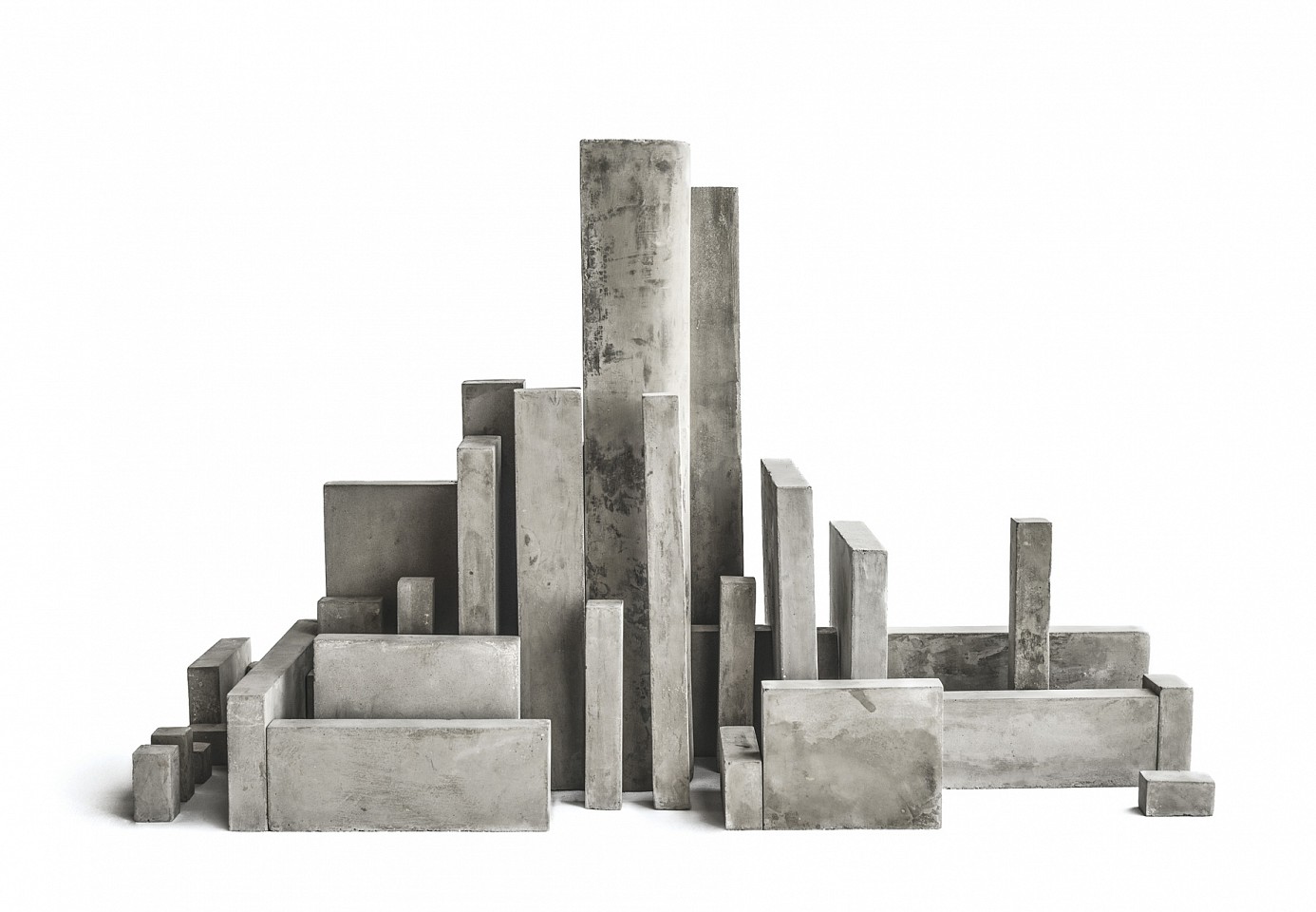
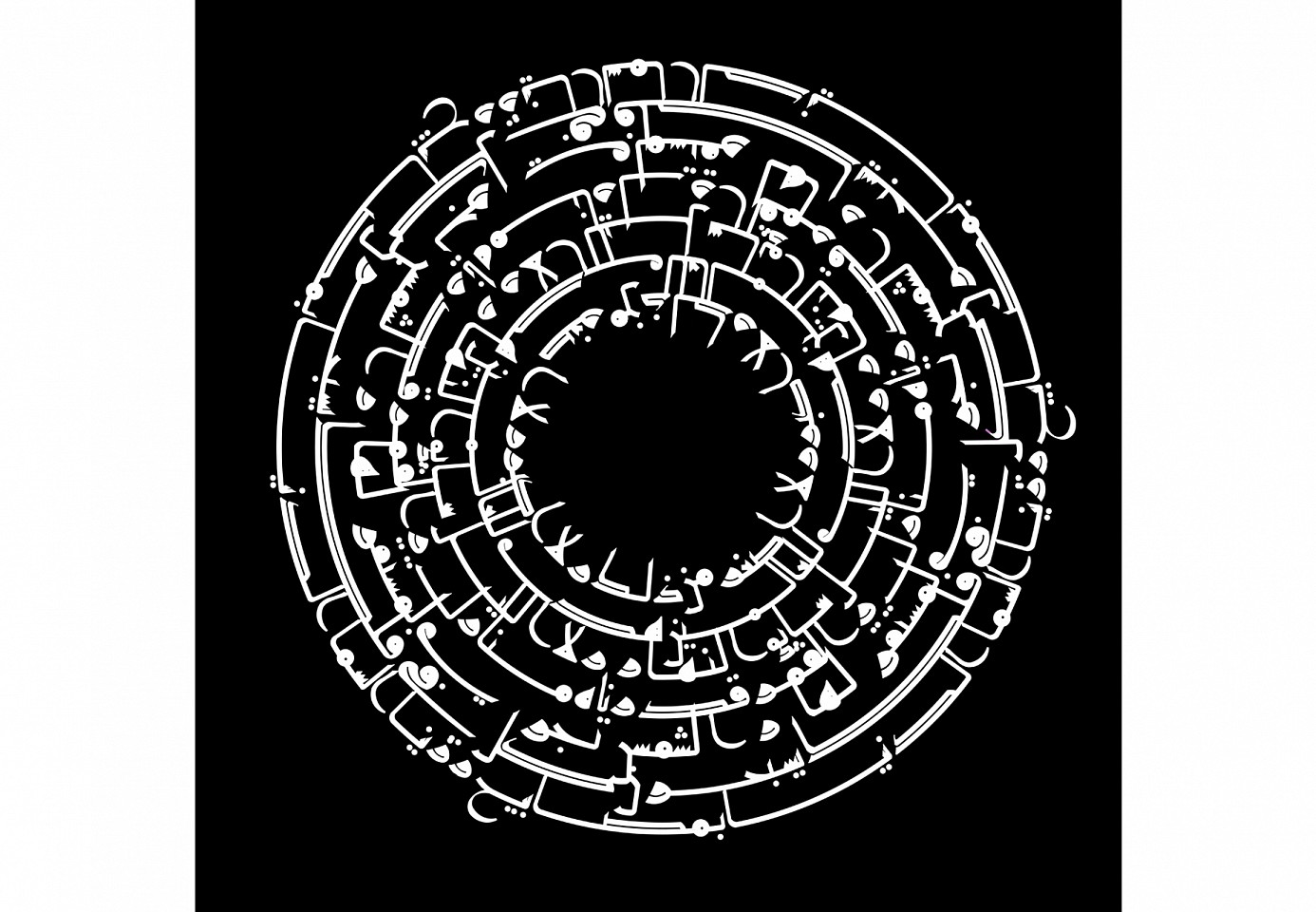
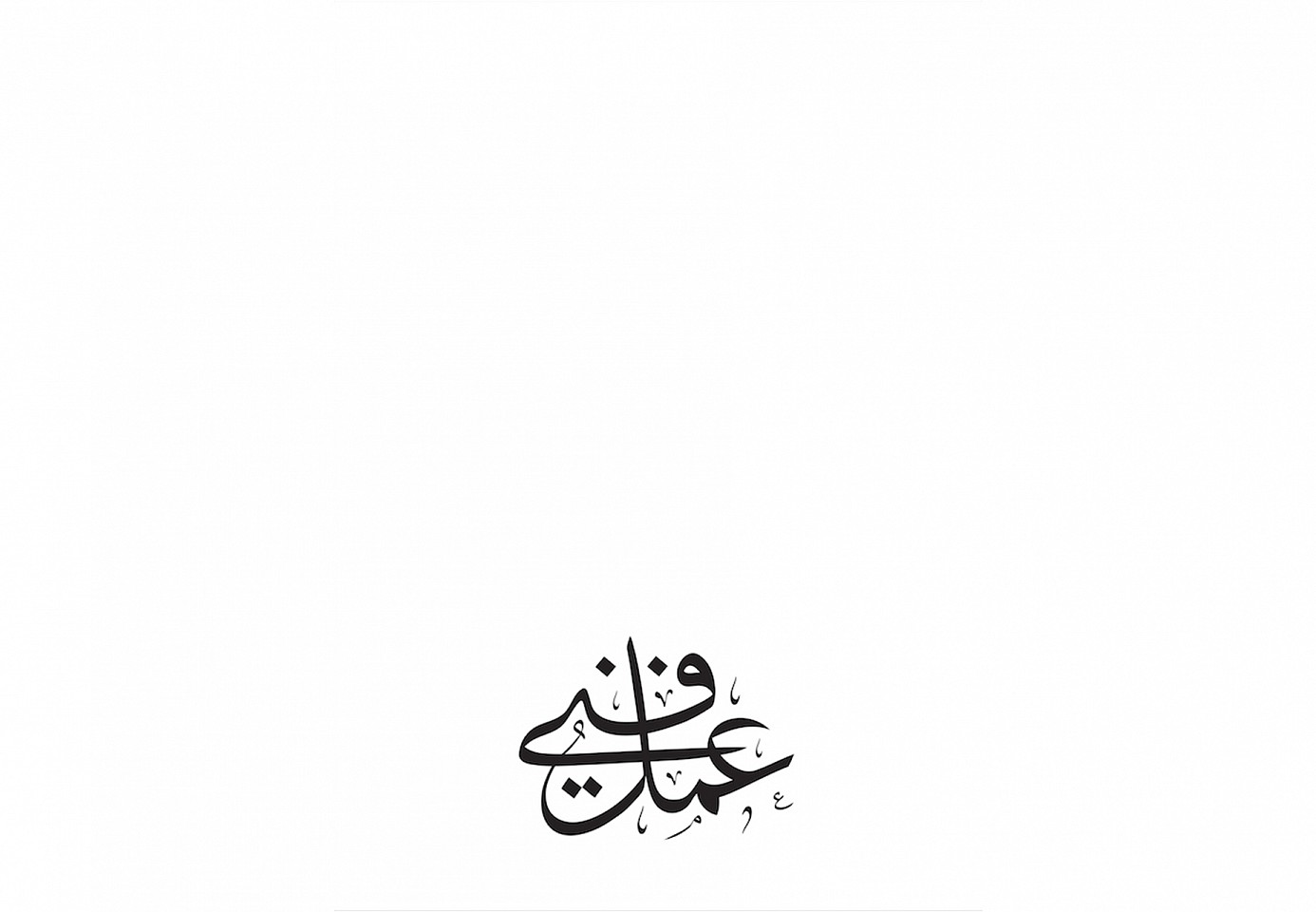

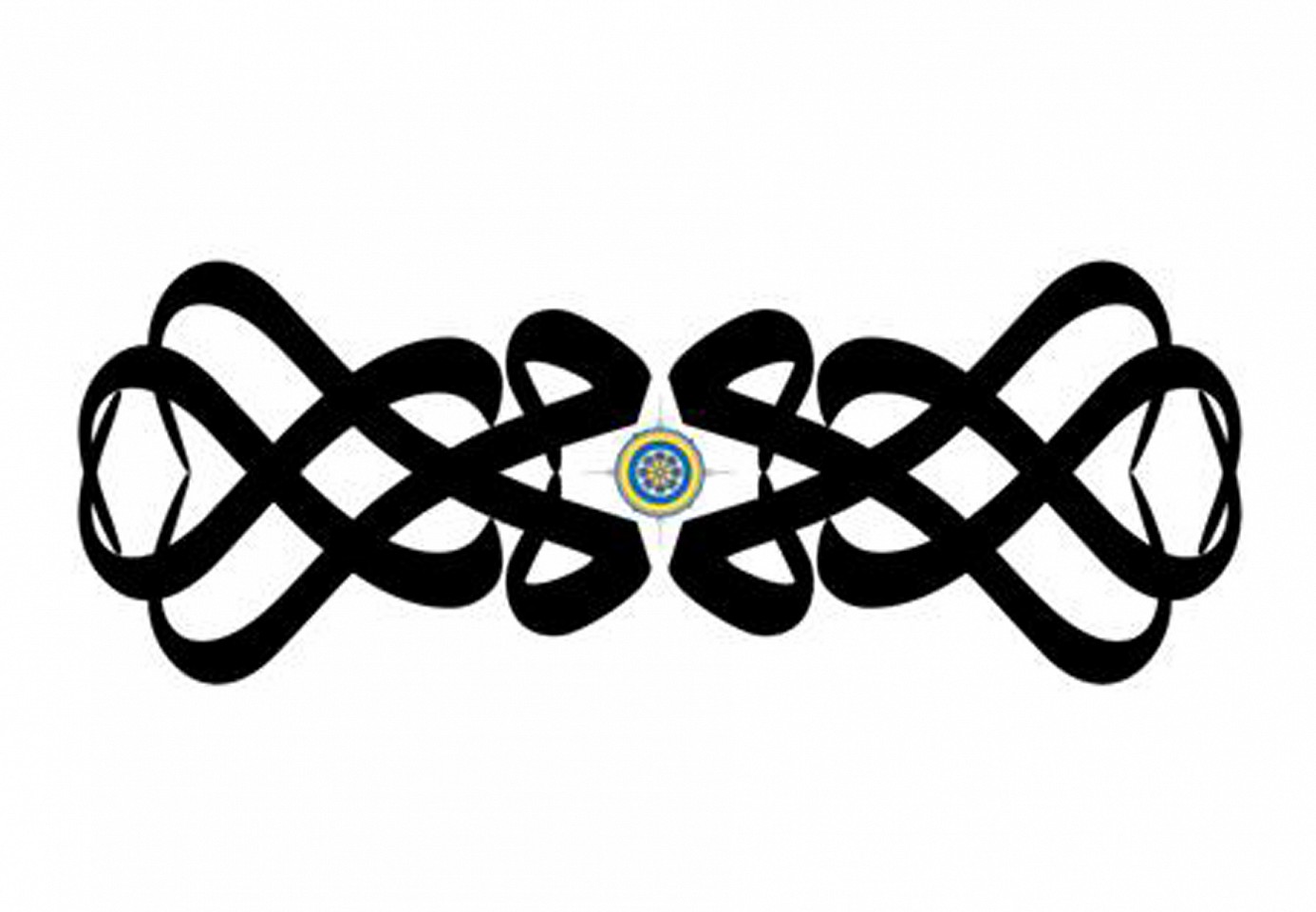
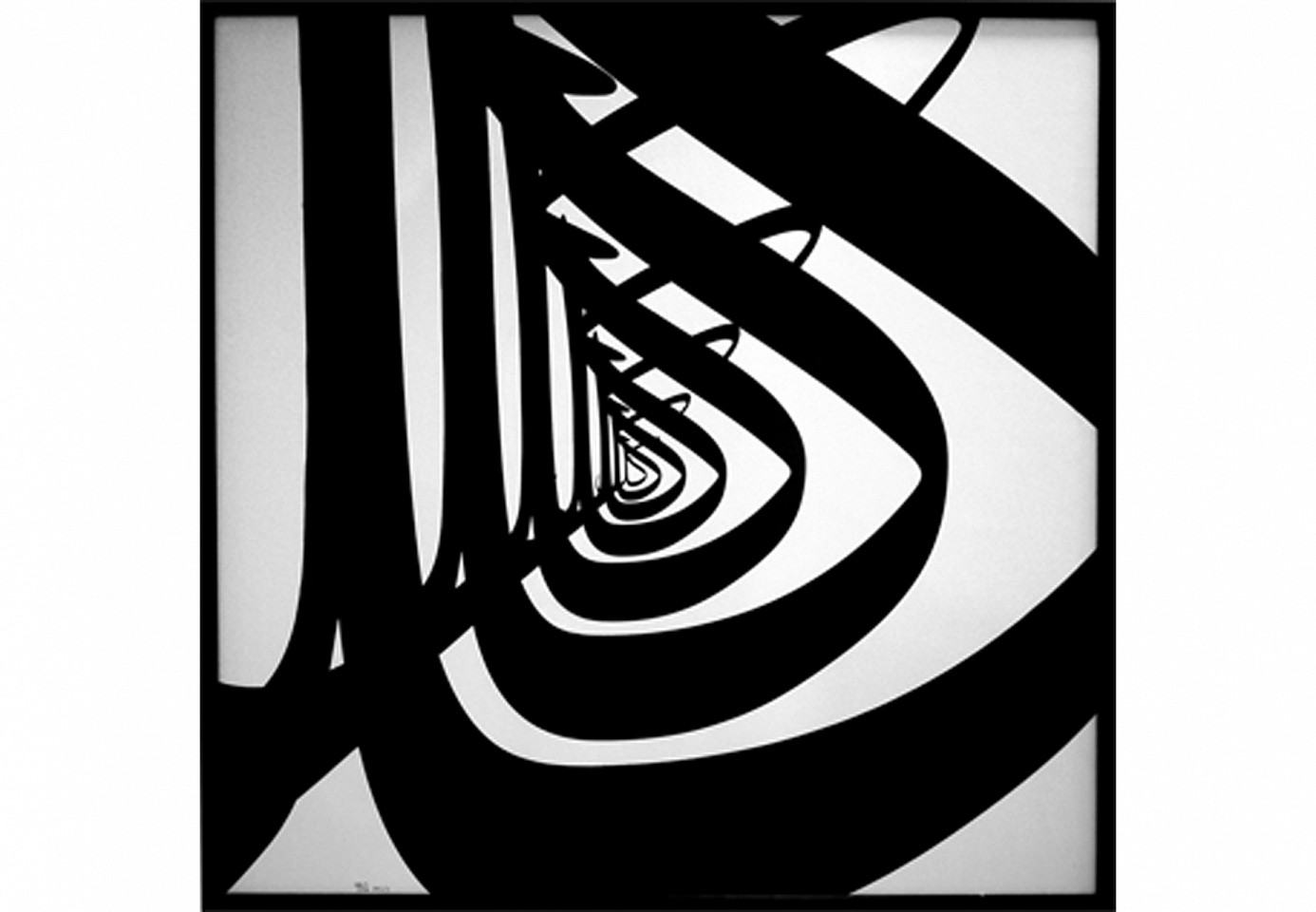
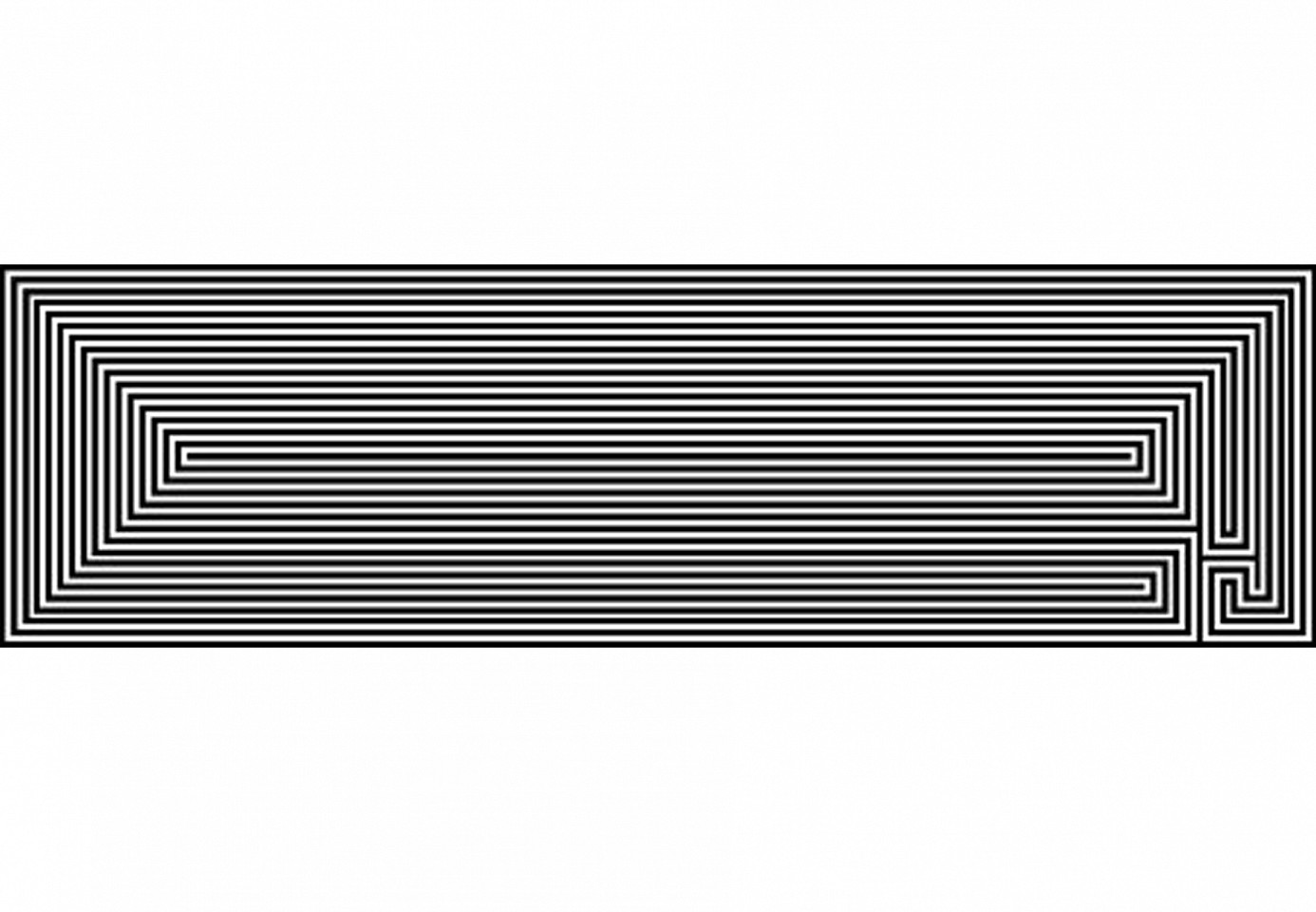
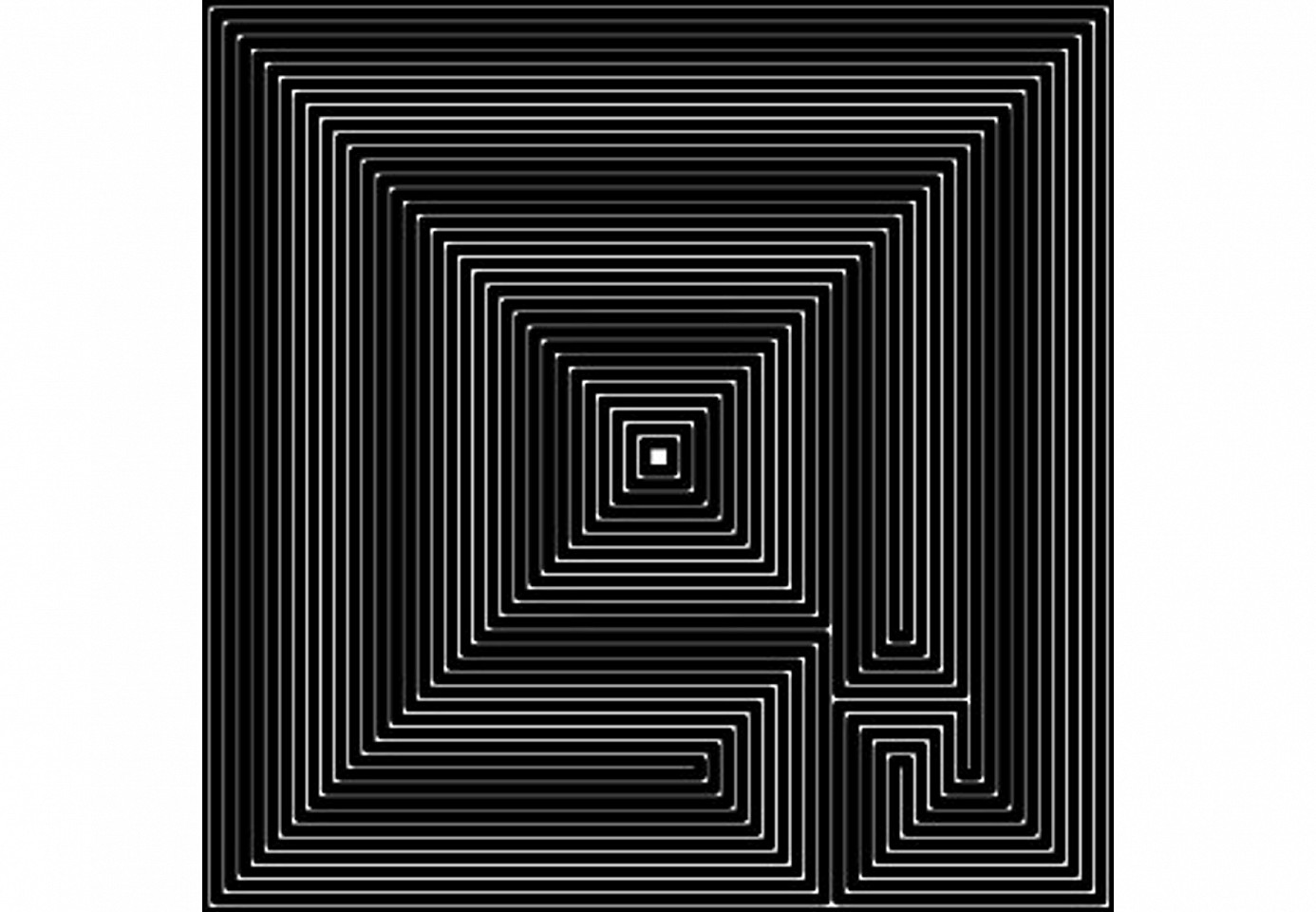
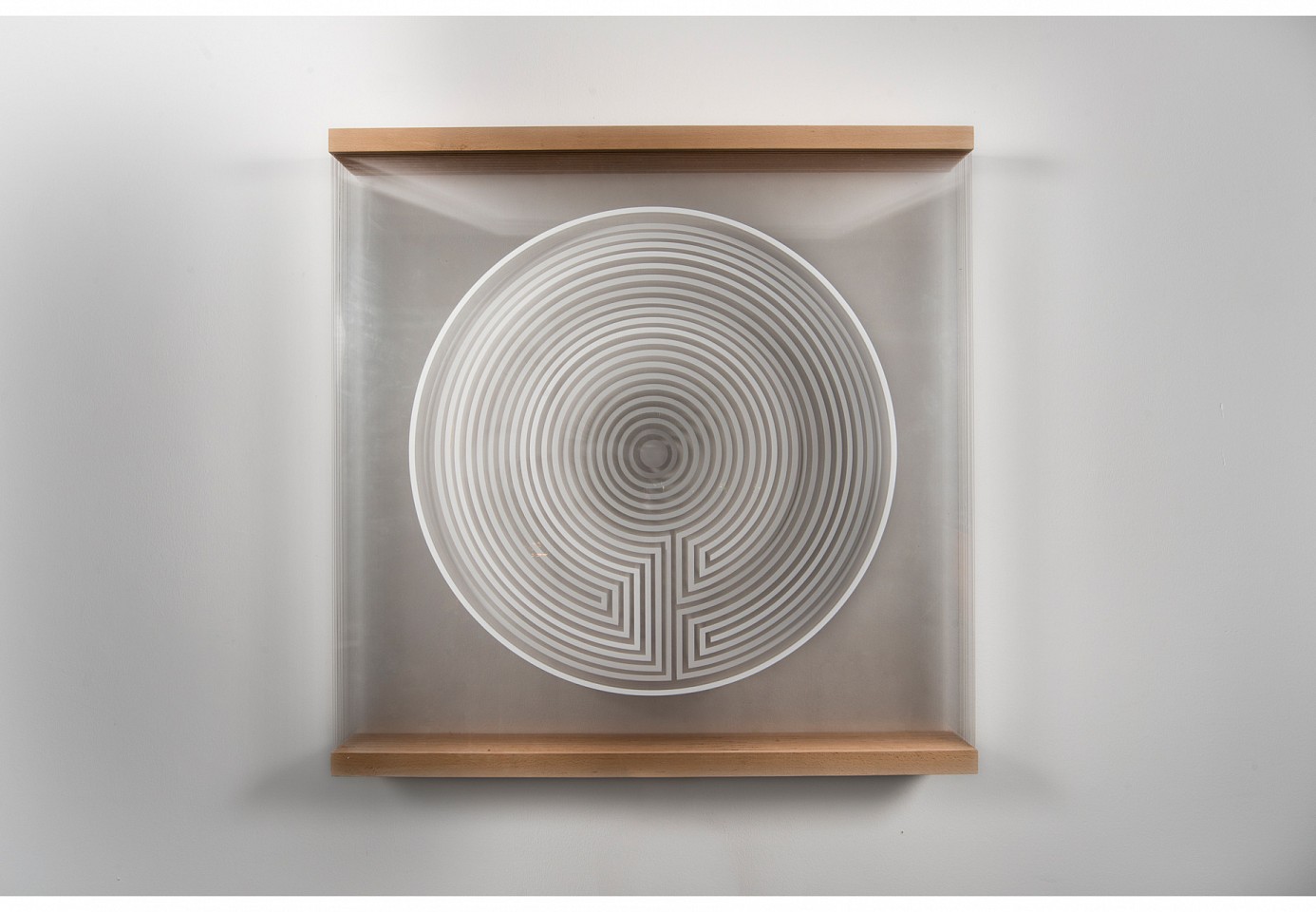
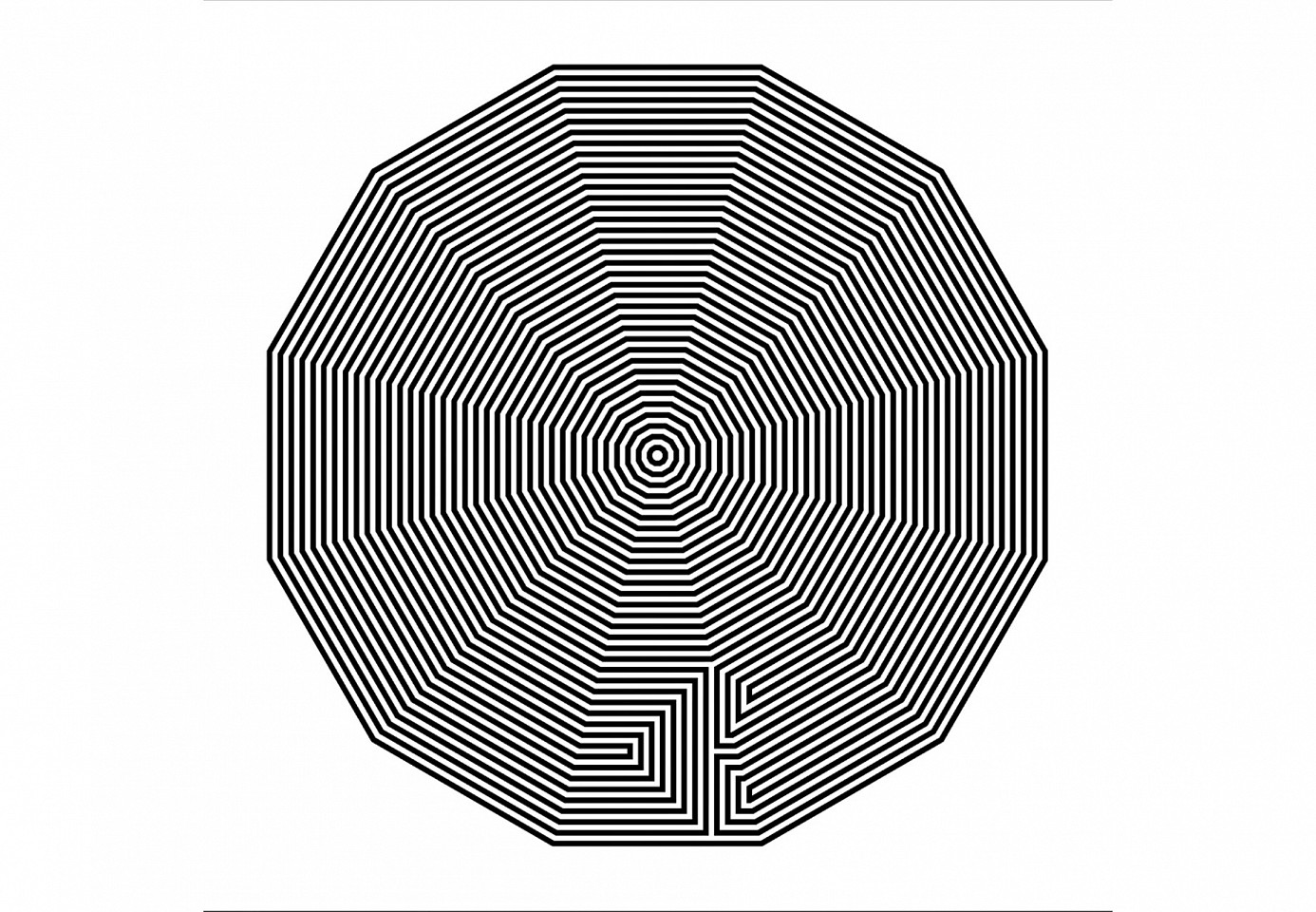
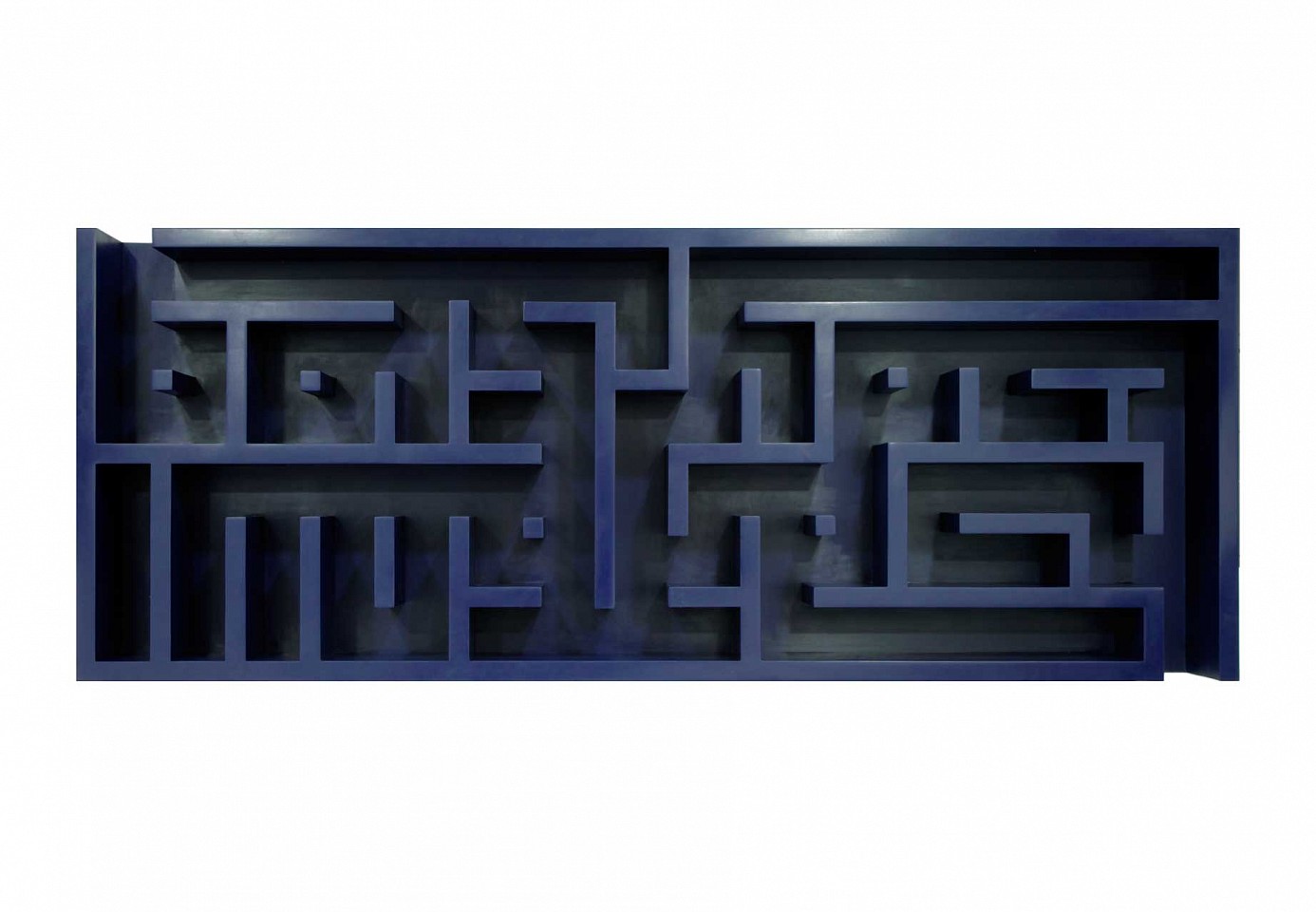

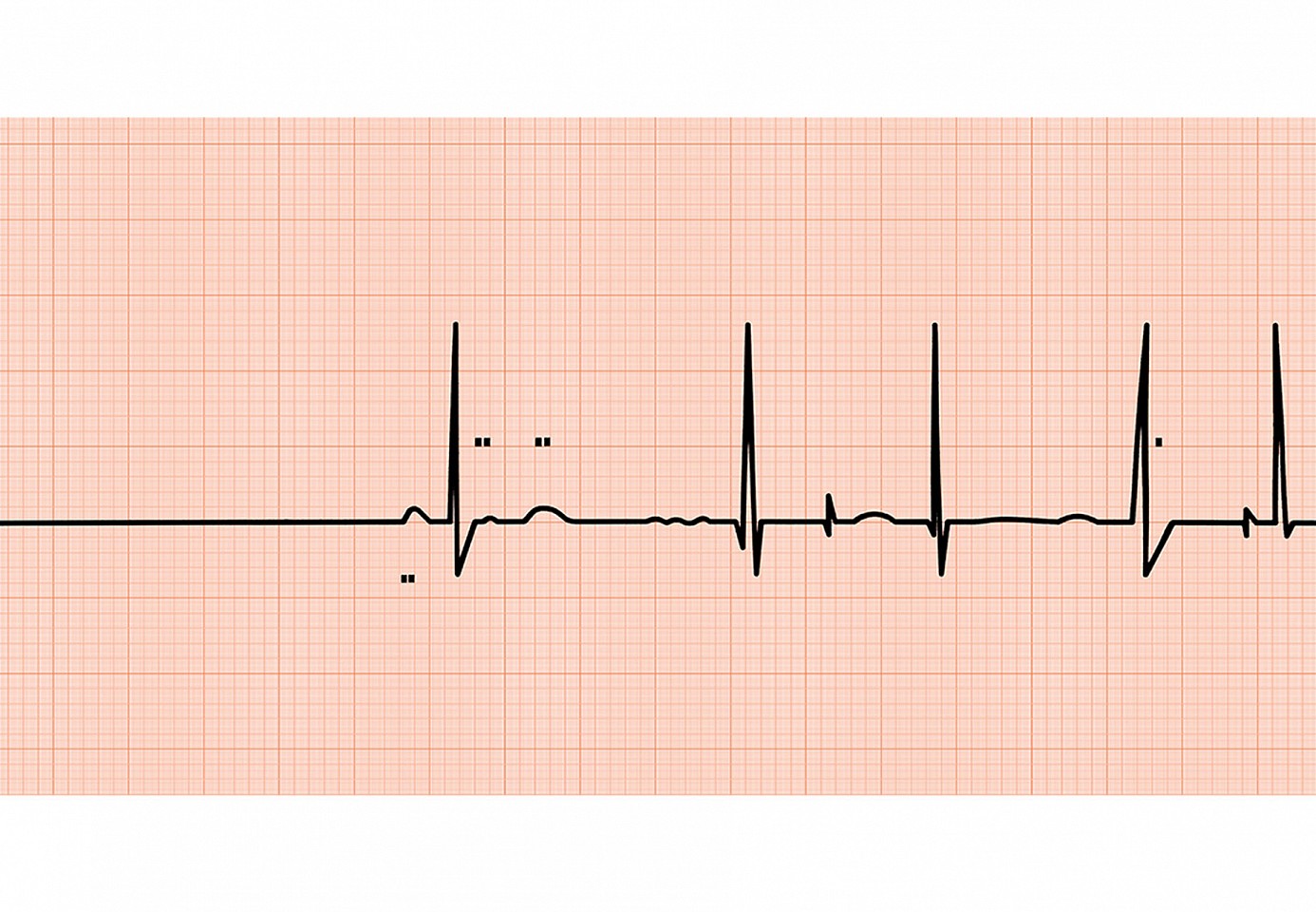
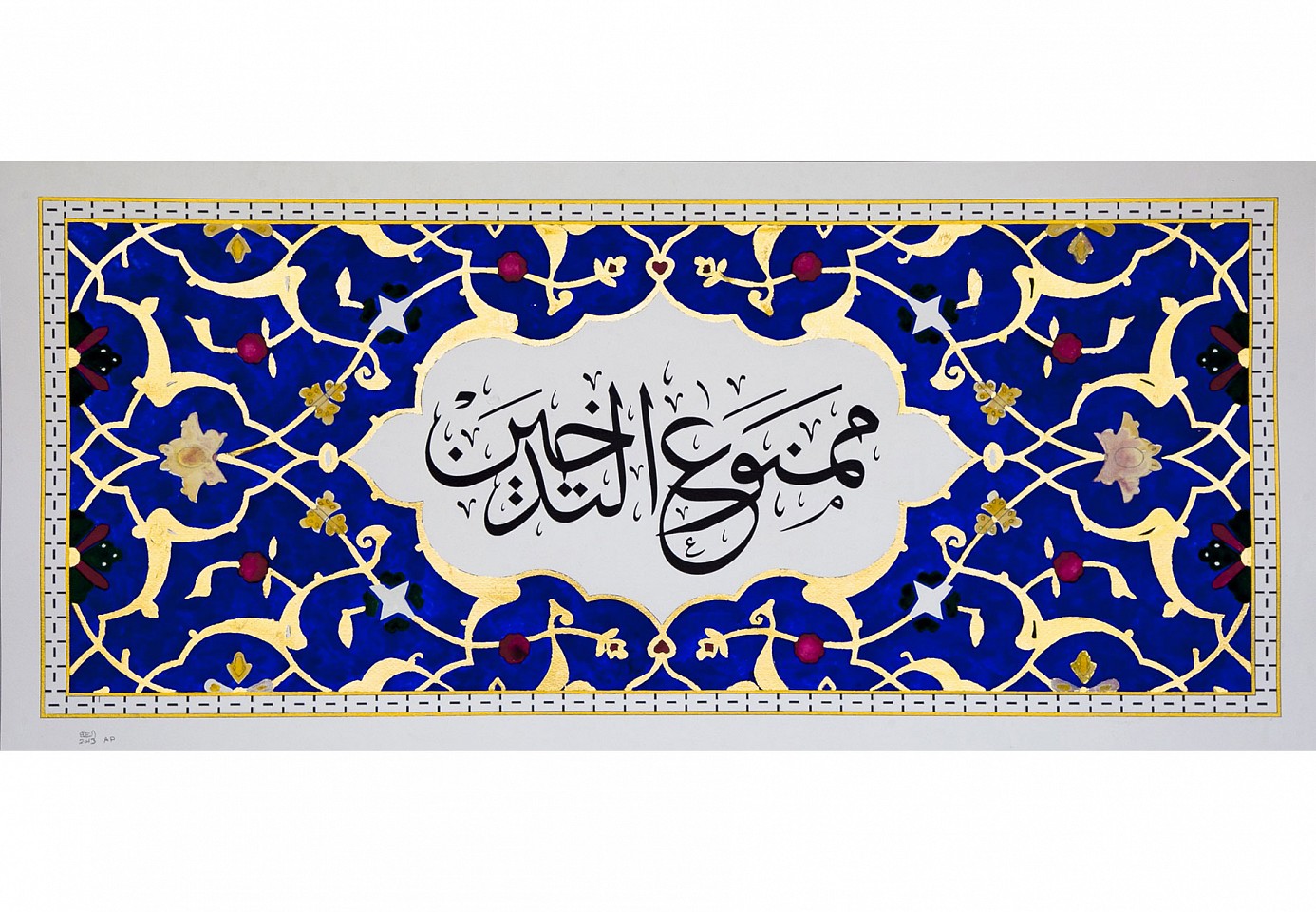
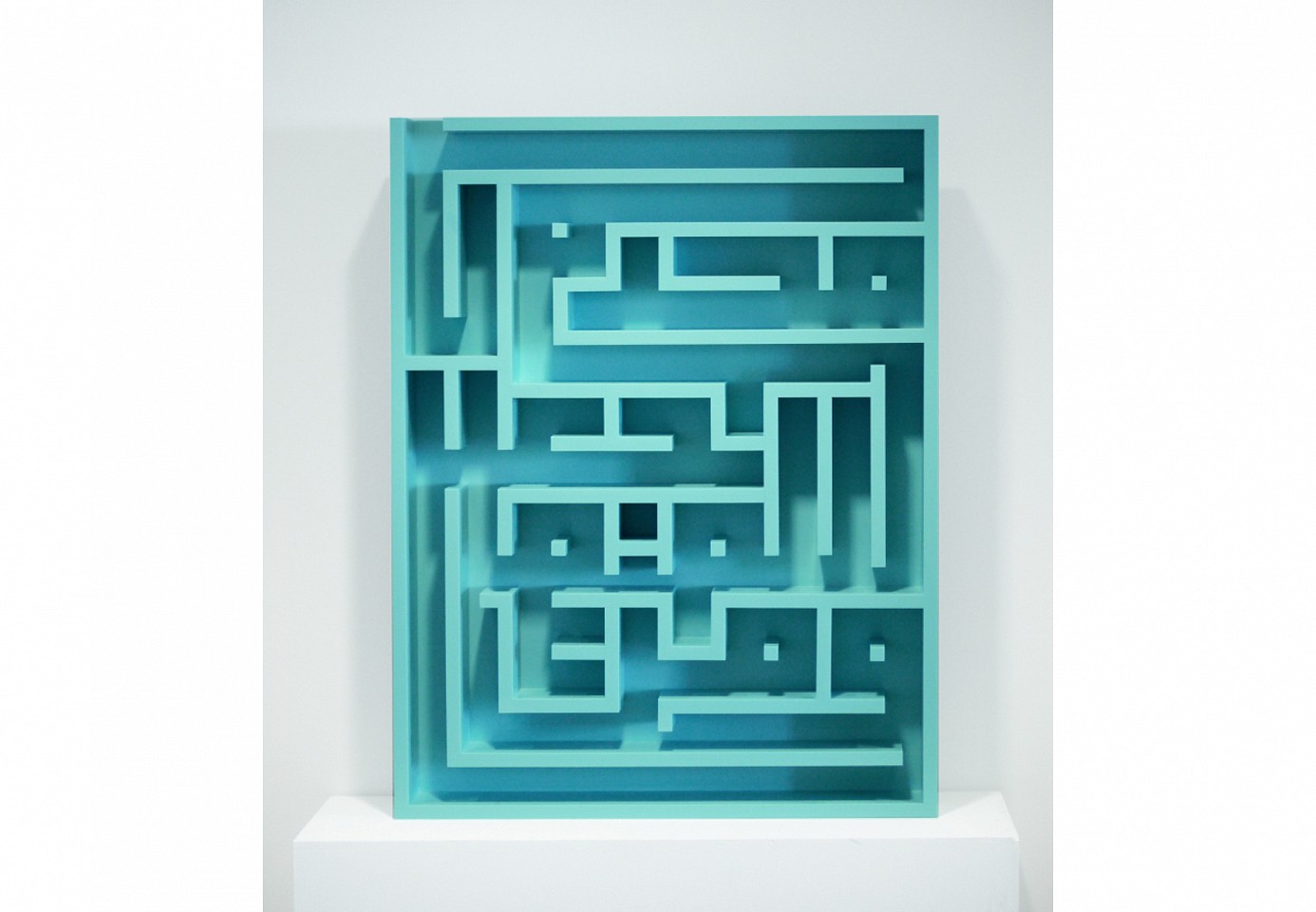
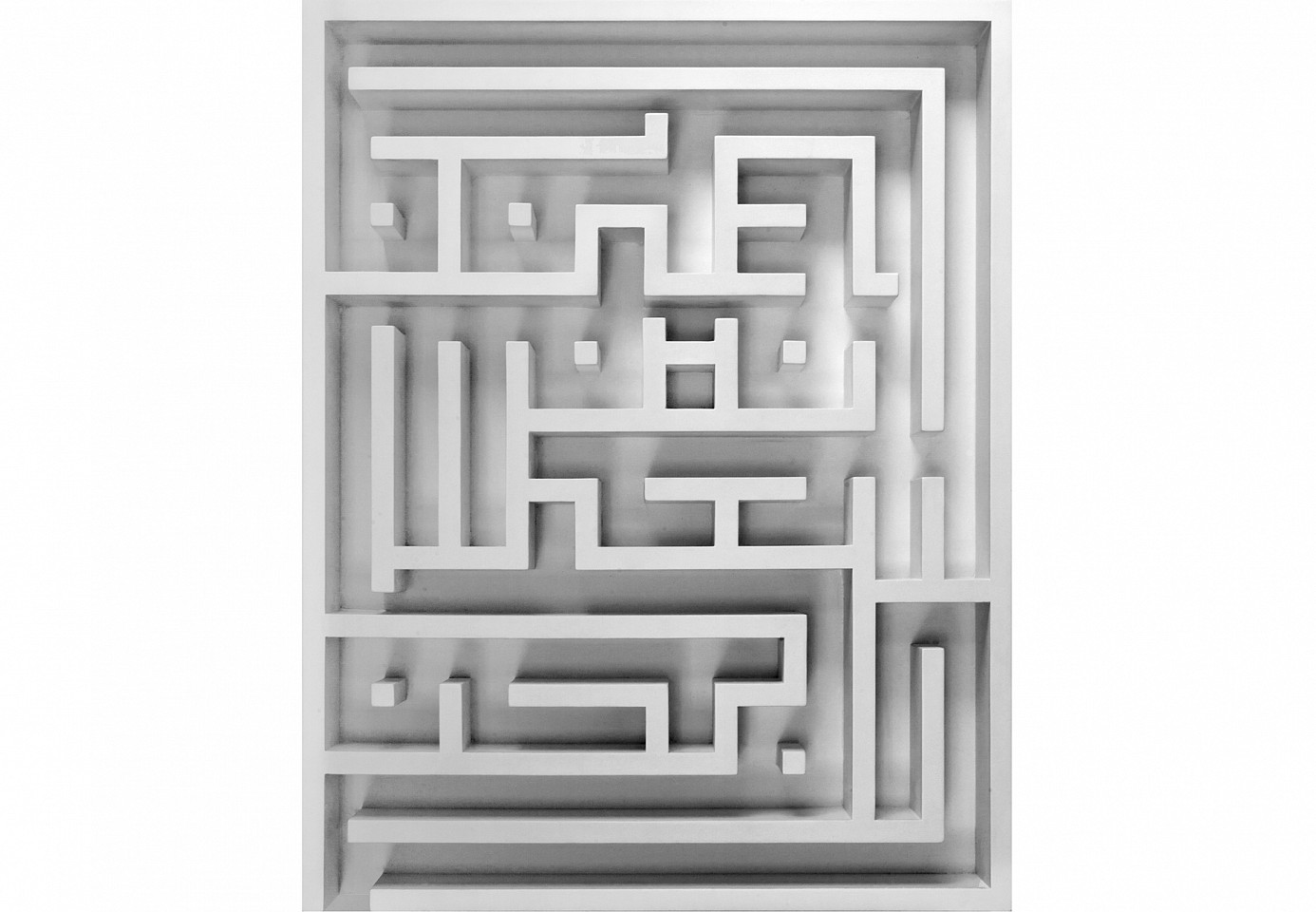
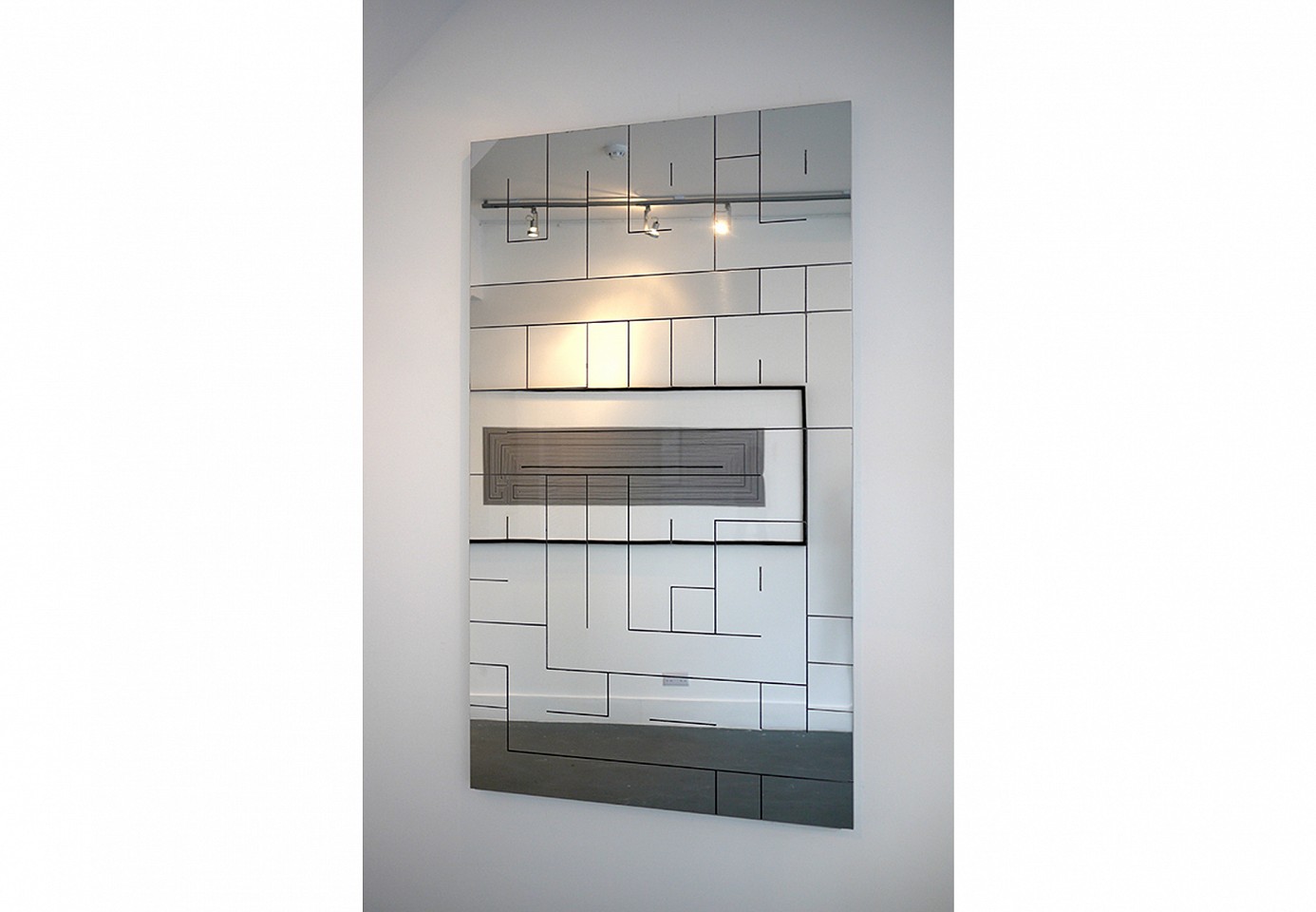
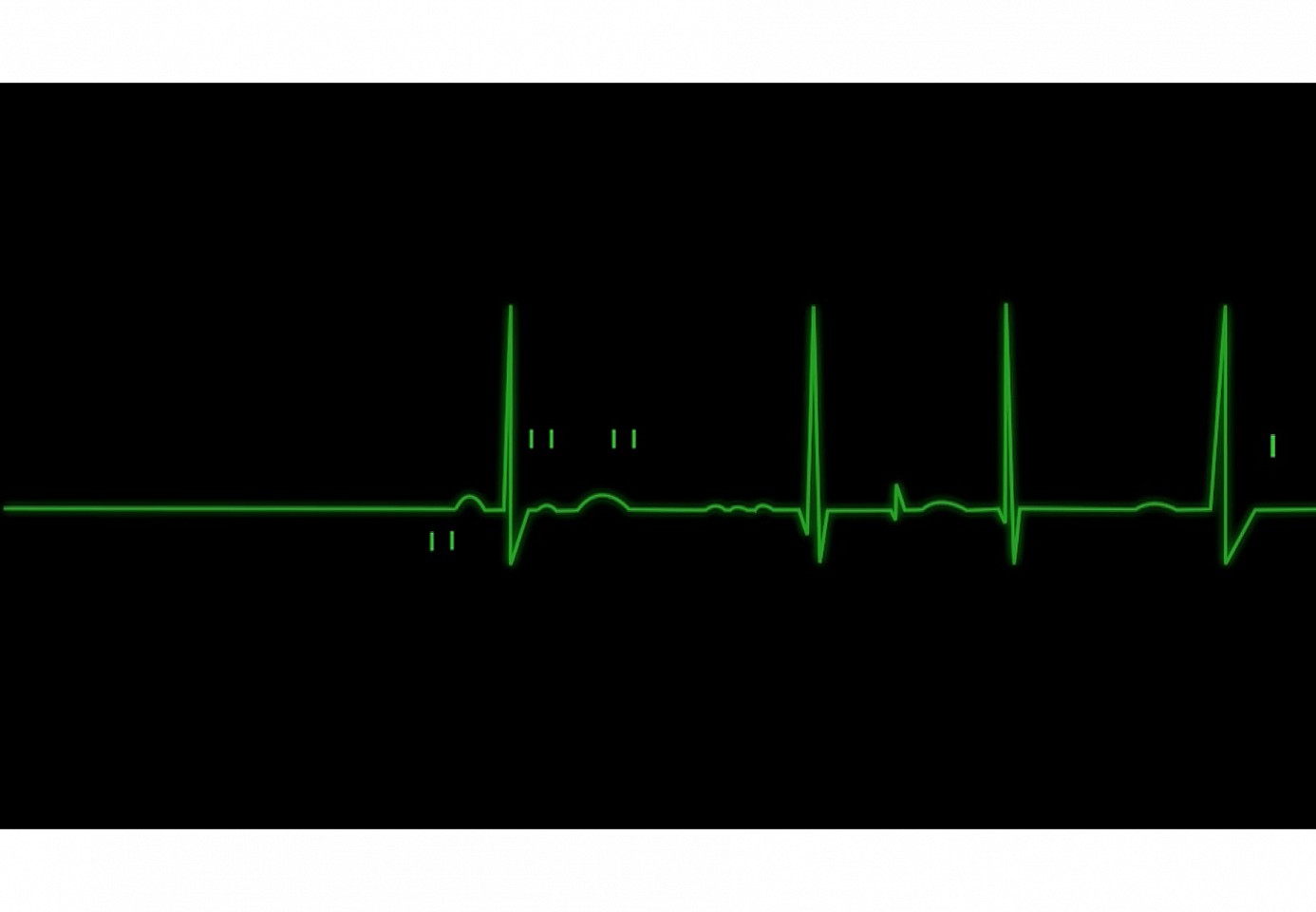
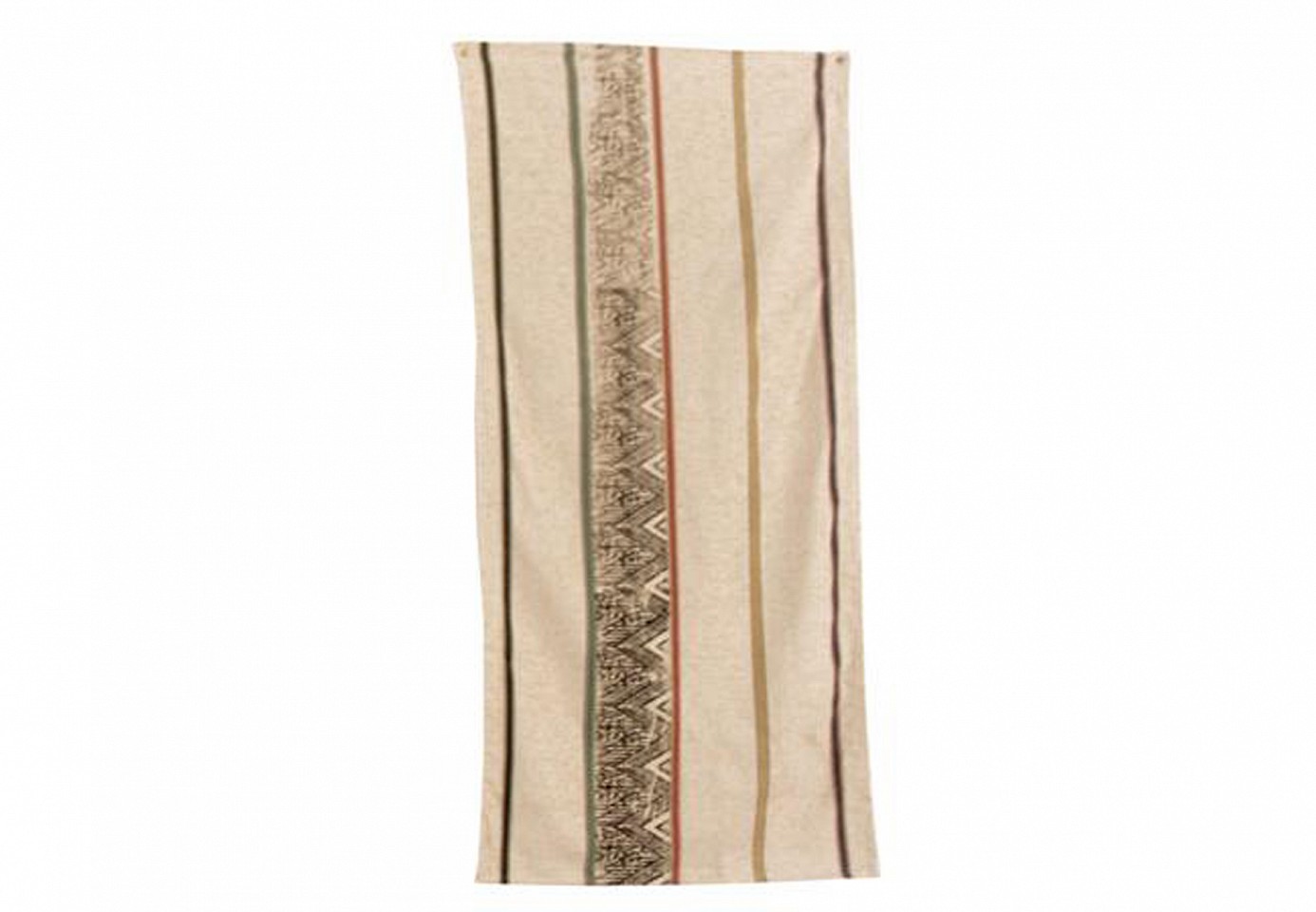
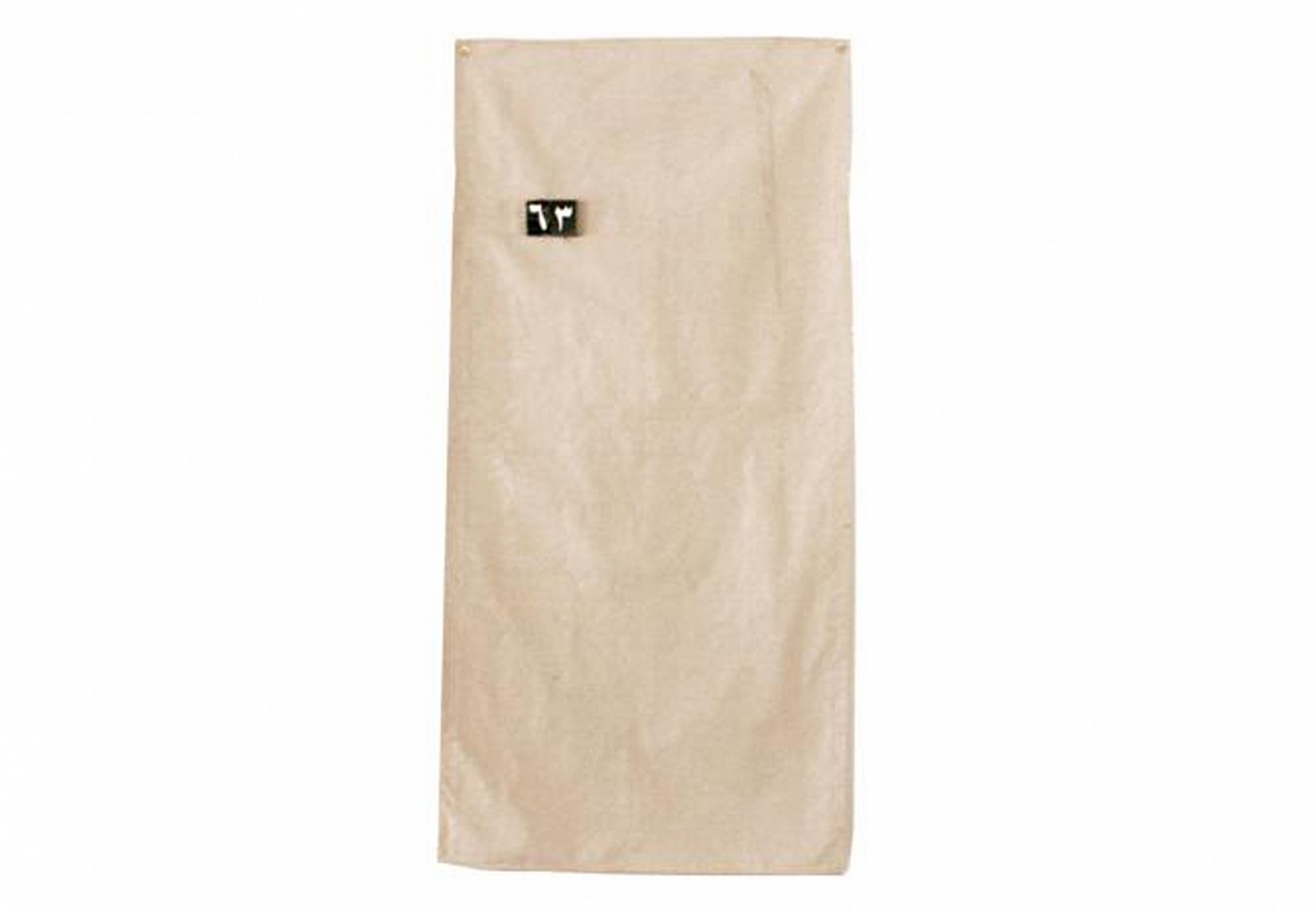
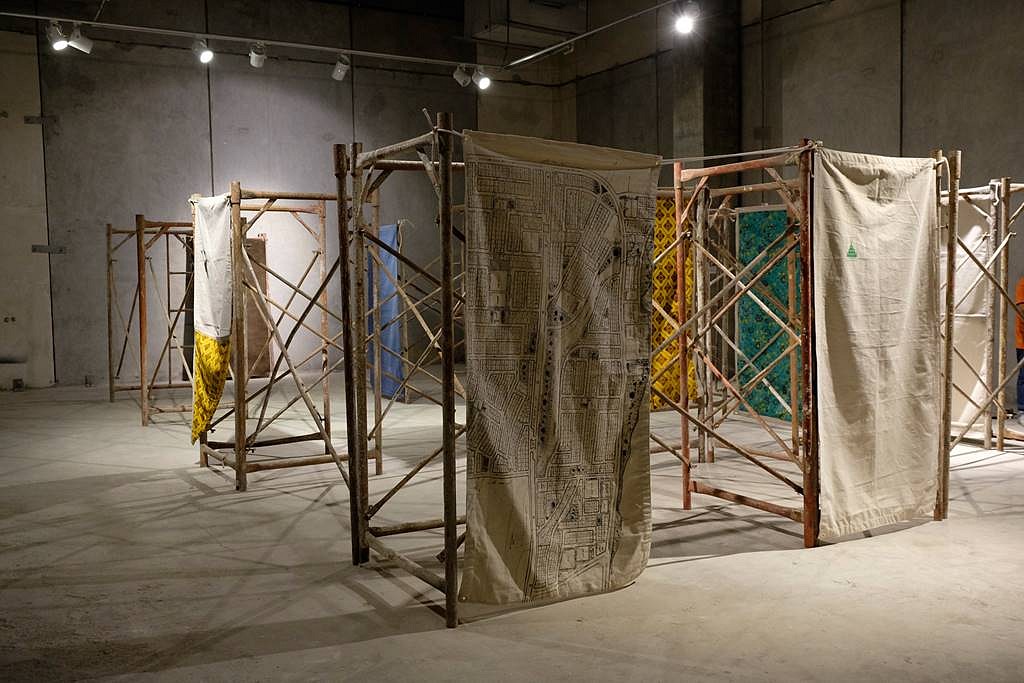
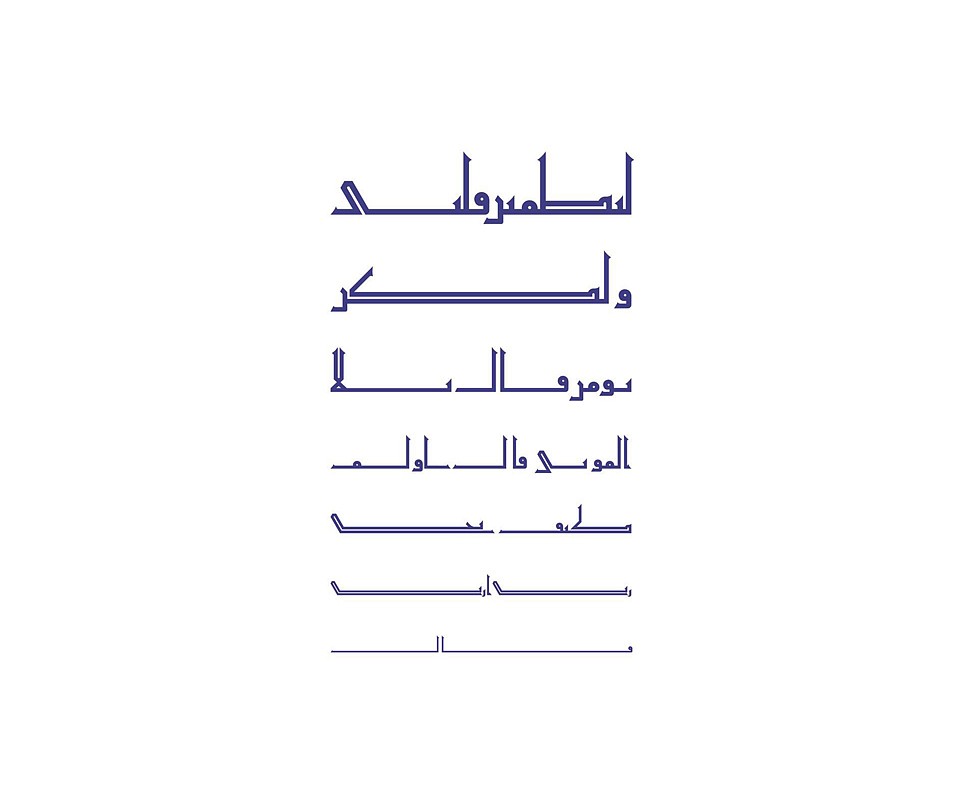
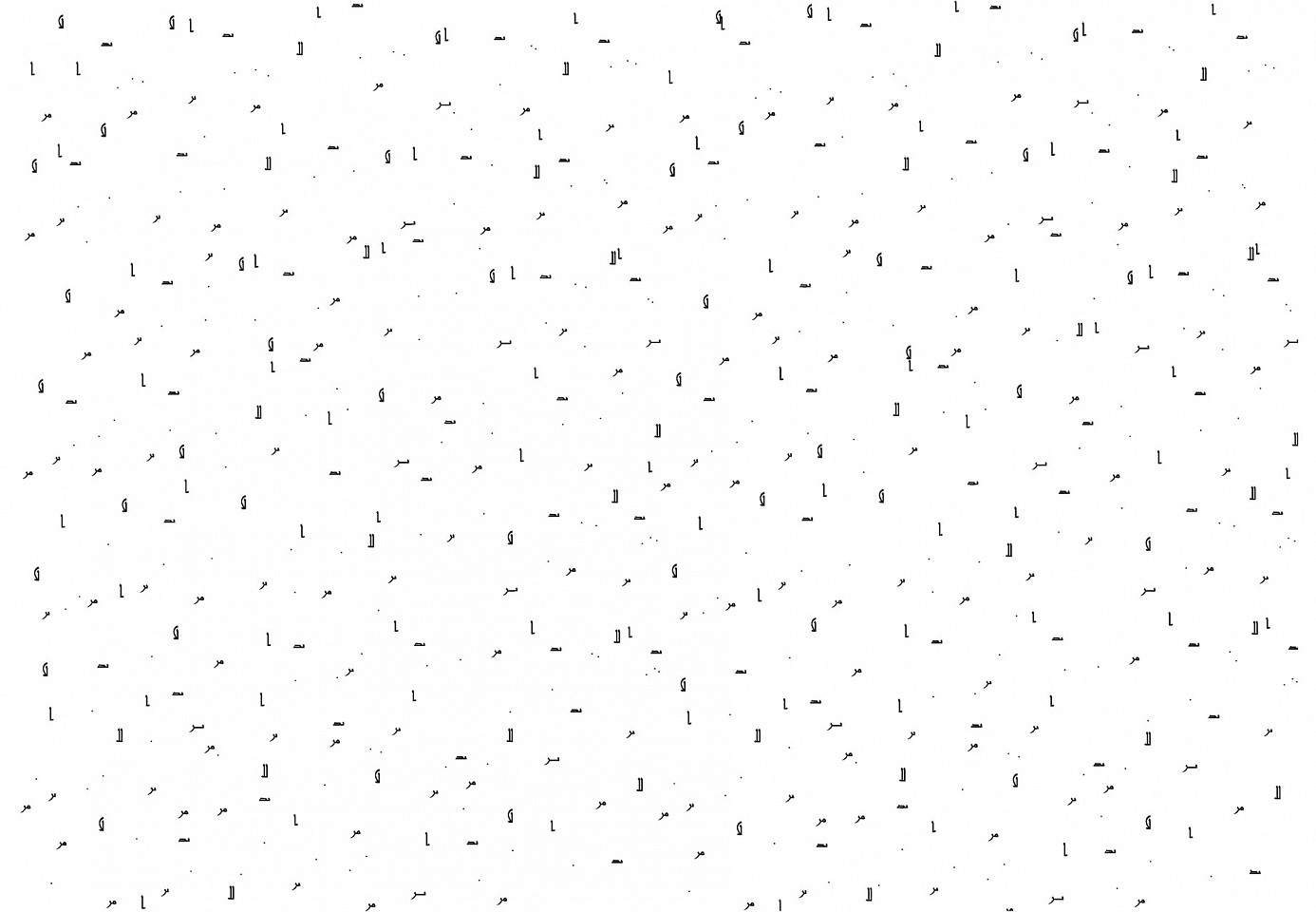
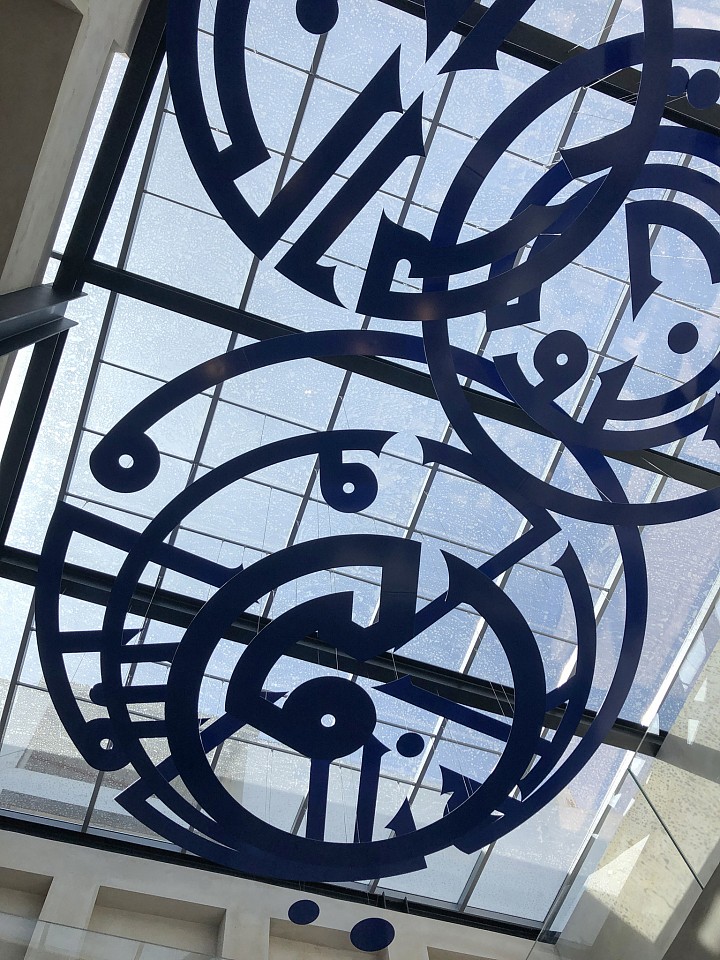
![<p><span class="viewer-caption-artist">Nasser Al Salem</span></p>
<p><span class="viewer-caption-title"><i>Allah [He is the First and the Last] II</i></span>, <span class="viewer-caption-year">2018</span></p>
<p><span class="viewer-caption-media">Print</span></p>
<p><span class="viewer-caption-description">Edition of 7</span></p>
<p><span class="viewer-caption-inventory">NAS0489</span></p>
<p><span class="viewer-caption-aux"></span></p>](/images/30253_h960w1600gt.5.jpg)
